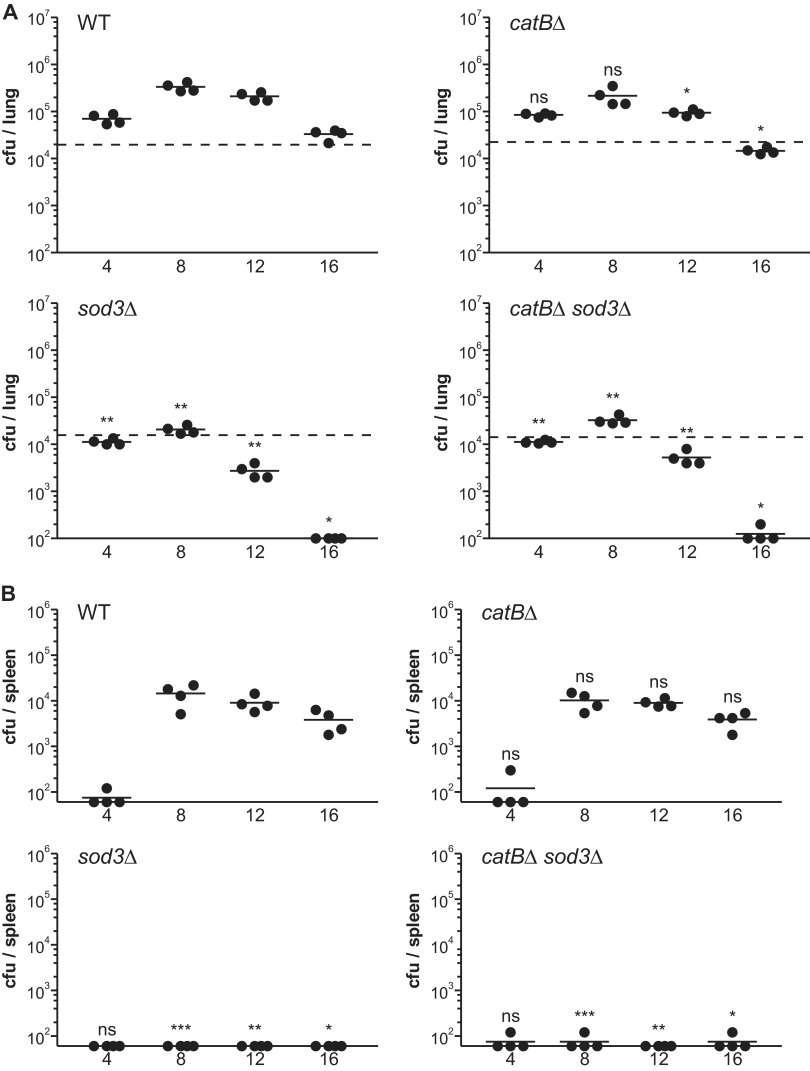Fig 6.
Sod3 deficiency, but not CatB deficiency, attenuates Histoplasma virulence in mice. (A) Pulmonary fungal burden kinetics after sublethal lung infection by Histoplasma yeast. Wild-type C57BL/6 mice were infected intranasally with 2 × 104 wild-type, CatB-deficient, Sod3-deficient, or doubly CatB- and Sod3-deficient yeasts. At 4-day intervals postinfection, fungal burdens were determined by quantitative plating of lung homogenates for determination of the number of Histoplasma CFU. The lower limit of detection was 102 CFU. Dashed horizontal lines indicate the actual number of CFU delivered in the inoculum. (B) Dissemination kinetics of Histoplasma yeasts after sublethal lung infection. Wild-type C57BL/6 mice were infected intranasally with 2 × 104 wild-type, CatB-deficient, Sod3-deficient, or CatB- and Sod3-deficient yeasts. At 4-day intervals postinfection, splenic fungal burdens were determined by quantitative plating of spleen homogenates for determination of the number of Histoplasma CFU. The lower limit of detection was 60 CFU. No yeasts had disseminated from the lung to the spleen at day 0. Each data point represents the CFU counts per organ from an individual animal (n = 4). Horizontal bars represent the mean fungal burden. Asterisks indicate statistically significant differences from wild type determined by Student's t test (ns, not significant; *, P < 0.05; **, P < 0.01; ***, P < 0.001). WT, wild type (OSU45); catBΔ, catB mutant (OSU16); sod3Δ, sod3 mutant (OSU15); catBΔΔ sod3Δ, catB sod3 double mutant (OSU46).

